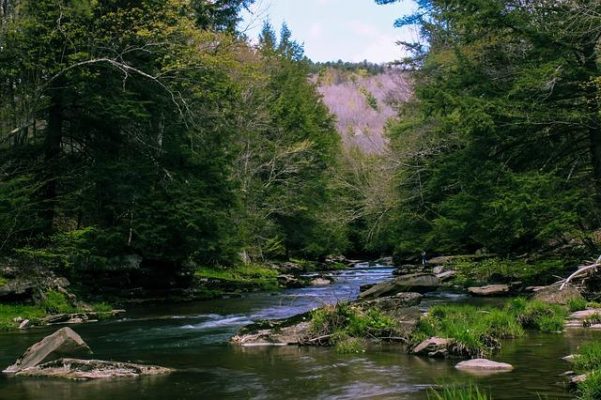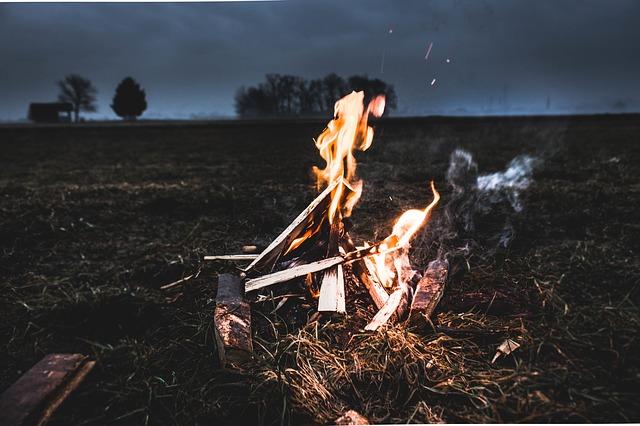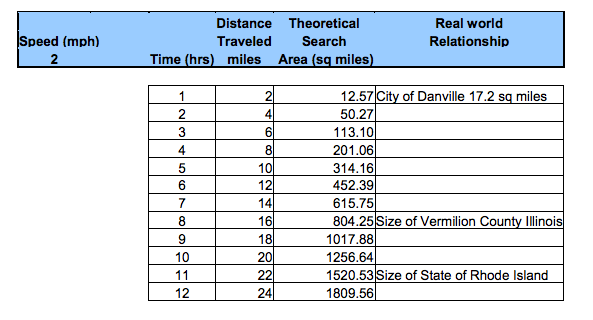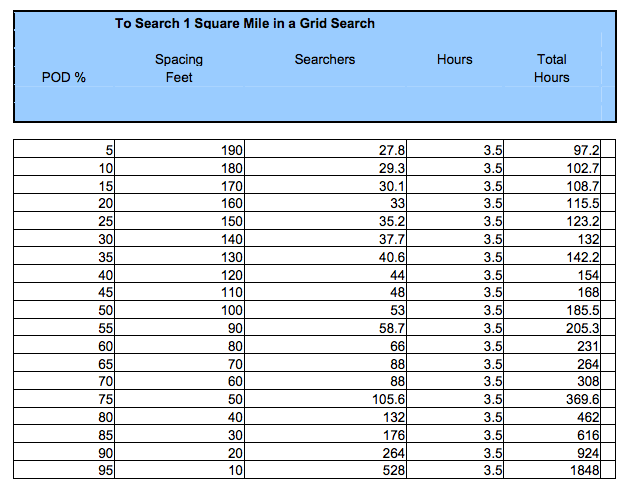Wilderness survival happens very easily every week. You are out hiking with your friend or partner and you stop to look at something interesting, you get separated from your partner and suddenly find yourself lost, alone, stressed, and without a single clue where to go in the thick of an enormous, green, national park.
This is what happened to American teen Austin Bohanan as he went on to survive 11 days and nights in the Great Smoky Mountains of North Carolina. This isn’t the first time someone has been lost in this national park and other areas in America and Canada. Others who went through similar ordeals have survived and some were not so lucky.
How did he make it through the ordeals that nature threw in front of him? He says God helped him through the ordeal, which would have given him the will to stay positive, but I think this lucky teen also had some good conditions and some great survival logic that kept him alive. When it comes down to it, wildnerss survival isn’t just about the skills you learn in books, or through practice. Sure that helps, but when the push comes to shove, survival is also about logical thinking and problem-solving. Someone could be an amazing survivalist in the Australian bushy outback, but if they were to survive a plan crash in snow-covered Sweden, how will they know what to do when faced with an arctic terrain? That’s where problem-solving comes into play. If you’re good at it, you are able to adapt to almost every environment.
Austin’s logical approach to wilderness survival kept him alive, his knowledge of the way the land works and knowing how small creeks work is what got him to safety. So let’s look at some of the things he went through, and what you can do to survive in the wild if you are in the same scenario.
In this case, Austin’s first thought was that he had to find a way to get out of the wilderness alive and find help as soon as possible. In that circumstance you need a destination or a rough idea of where you need to go and you need the energy to get there. The next step is to keep that energy going, this is survival. To keep yourself going you need water, food and rest. You can’t keep going without them. Food and water are the obvious ones but rest is also crucial. Without rest you suffer exhaustion and your will to survive falters and you slowly give in. In that case we want to keep our mental strength as high as possible, so there’s a lot to be said about the management of energy levels when you are in this environment under these pressures.
Wilderness Survival Against The Elements
The rule of survival must-haves is that you can survive three days without water and three weeks without

food, so a primary concern to you is going to be water. Because the area is mountainous and you are covering vast distances doing hard hill climbing you will need to consume more than the average amount of water. There’s a balance to this consumption as the more water you drink, the less salts you have in your body. This mountain range has plenty of running streams which are a constant source of clean drinking water, so one of the biggest wilderness survival necessities have been satisfied. The other issue to survival would be the weather, but since the conditions can be quite calm and not too high or low, the weather was a suitable environment allowing the teen to keep himself at a good state in moderate temperatures.
These multiple issues added together created the right circumstances to assist in Austin’s wilderness survival. He was:
- In temperatures that were about 7-9 degrees overnight and 14-17 degrees during the day
- Fit and young
- Had plenty of clean drinkable water available to him
With these issues combined his task of getting out was much easier. Something that could have stopped him and could have placed him in much more danger than just being lost was if he was to fall and injure himself. This is something that happens in hiking disappearances and can end in tragedy as a person can be rendered immobile without any way to find help or water.
Finding Help
In this case of wilderness survival we had a young, fit and experienced hiker. It was that last bonus, experience, that saw this teenager go from survival to being able to find his way out of the wilderness. The instinctive steps this teenager undertook to find help are lessons that we can look at for mountain survival.

After Austin became lost, he identified a high mountain ridge that would have clear phone reception to place a call for help. In the mountain range that he was lost in, there are a number of reasons a phone signal might not travel such as the thick blanket of trees in the forest canopy above and the large mountains blocking the field of reception necessary to make a connection.
Once he reached the top of the ridge he tried to make a few calls to his mother, but none of those could get through. In this scenario, a mountain ridge serves two purposes. First, the chance to get a phone connection, which didn’t happen in this case. The second was to have a clear view of the surrounding area’s features, possible nearby towns, smoke, rivers and clearings. For Austin, finding a river was not only a source of water but also a path that would eventually lead to another river where he could signal boats for help.
During his 2-3-day-walk along the creek line, search crews were out looking for the teen. In any wilderness survival case where you are on your own, this would not be the case as often hikers fail to notify people before they depart on their route. As a precaution, this is a wise lesson in pre-planning a hike and notifying someone of your travels. You should give that person an estimation of your route and an estimation of your arrival time. This gives that person a very simple responsibility to be aware of your presence and your intended arrival. This is a precaution that is easy to do and can spare emergency crews the arduous searches many of them have to conduct by knowing your trail route.
Other safety options for hikers can include things such as safety beacons, similar to the ones used out at sea. For the purpose of search and rescue, I carry a signalling mat. I have never had to use it for emergency purposes and instead use it as a ground for my tent floor. A cheaper alternative, and one which is just as effective, is a mylar foil blanket which folds up very small and is usually in the first-aid kit. It can keep you warm and also act as a panel marker for overhead crews.
In Austin’s case, air search crews were being used as well. He said that when one passed over it was not able to see him due to the thick forest canopy. Often, air search crews have infra-red devices for this purpose. In another scenario, depending on the vegetation, a fire could have been lit to act as a smoke signal for search crews. But I say this lightly as this depends on the vegetation in your immediate surroundings. Lighting a fire might just cause a forest fire and could very well put your life in much more danger. In Austin’s case, he was able to travel creeks and navigate his way to a river where he could flag down a passing boat.
During his wilderness survival period, he never ate any food. There was one interview that quoted him as saying he came close to eating some bugs, but for the most part, the teen never ate and only consumed water. Despite the fact he had been conducting arduous activity by walking through waterfalls and rocky areas to follow the creeks and river lines it goes to prove that someone can survive without food for three weeks.
Alternative Method of Wilderness Survival

There are a number of ways this scenario could have ended. Thankfully Austin is now safe back at home with his parents. For the most part, his own skills paid off in him finding help and staying alive. There could have been much worse instances where his life could have been in more danger than it already was.
In an alternative circumstance, had the conditions been the same as they were in Austin’s case, there could have been a different approach. The first was to use the same ridge he climbed to place a call out for help. Prior to this a good option would have been to fill the bottle with water to take to the top of the ridge. Once reaching the ridge and finding that a cell phone signal could not be reached, an alternative could have been to remove the glass screen off the phone and use it against the sun to start a fire with dry wood. This is another method of calling for help and would be an easy signal for search parties to spot, especially by air.
The effect of waiting on the ridge line for help and using the fire as a method to attract attention and call for help not only assists through obvious smoke signals but also lessens the risk of injury from walking over large distances and also reserves energy. In some of the statements made by Austin he told press that he had to walk through some very demanding obstacles such as waterfalls and rivers with large rocks. This increases the chance of someone falling and injuring themselves without any method of signalling for help.
Don’t Move Too Far – Search and Rescue
If you were hiking with someone, the further you move from the place you were last seen the more your chances of being found diminish. Survival instructors and the US Forest Service say that if you get lost and are unsure of a path or route, it is best to sit still and let help come to find you. With both of these in mind, the ridge line would be the best opportunity as it was near the area where you were last seen by another person and it is a high place where you can signal for help with a fire.
Taking a look at search grids that are designed by search and rescue services, if you move one mile from your last known location it creates a search area of three square miles. If you move two miles, the search area expands to 12 square miles. That alone is a huge effort by search parties.
The graph below shows the required search area size relative to how far you have moved.
So that we have isolated the smallest area by only moving two miles, that gives search parties an area of more than 12 square miles to look for us. So how long will that take before we are likely found? In the graph below from Ted Fisher Vermilion County STSAR (Special Tactics Search and Rescue) we have an example of a one square mile grid search, which is half of the size of the area mentioned above. In this graph, look at the left indication of POD, or Possibility of Detection. The more you want to increase the POD the more you need to increase the amount of searchers required to minimise spacing in the search party. The total hours on the right are the calculated hours of the searchers.
The likeliness of being found by a search party depends on the resources, both voluntary and paid, that a community can provide. Often regional communities near hiking spots can only provide a certain amount of searchers so it is an issue that may limit POD.
To increase your chances of being found, the fire multiplies that as smoke clouds are visible from so far away. Sitting on the ridgeline with a strong method of signalling and a full bottle of water seems to be a very likely course of action for someone looking to be rescued. Being on foot for 11 days and nights and walking through arduous obstacles, as in Austin’s case, while it ended in his safe departure from the mountain range and into a hospital, is a very risky way to find your own way out of a bad situation.
Prior Preparation – an easy thing to do
It goes without saying that making plans prior to going outdoors is a must and this lessens the extremity of wilderness survival. It takes only 10 minutes and could end up saving your life. This is advice that you may have seen before but it pays to adhere to it.
In the case that you are going outdoors on your own:
- Let someone know where you are going
- Let them know the route you will be taking
- Tell them the likely time you will arrive back to your car or home and to call when you are back
- Take a map of the area with you
- If you have a smartphone, pre-load the Google Maps of the area you are going to. Without reception, you will still be able to use this map
- Get a satisfactory medical kit and keep a mylar foil blanket in it
- Keep a way to start a fire (sometimes using your mobile phone screen as mentioned above isn’t enough)
- If you are in an area without clean running water, get a water filter
- Take a water bottle with you
- Take a small amount of energy in your bag (protein bar or energy bar)
Following these easy steps can ensure your safety if you were to be alone in a wilderness survival scenario. So many hikers go missing specifically because they fail to let people know where they are going, they get lost and have no way to find a nearby path or public area, they die of thirst or drink dirty water, and search and rescue parties are unable to find them. All of these steps and precautions are either free or dirt cheap and the items are small enough that you can add them in a small hiking bag or fit them into the side of your big hiking bag.
In Austin’s case, he had the right conditions to survive. While his experience was arduous, he was faced with a reasonable climate in an area where he knew how the land worked. He was young, fit, healthy and able to think clearly for himself to guide his own way to look for assistance. In many other conditions, circumstances can be much worse and you should always follow given precautions to keep yourself safe and alive.
The lesson in this: a logical approach to wilderness survival is key, but prior preparation is the master of solutions.




